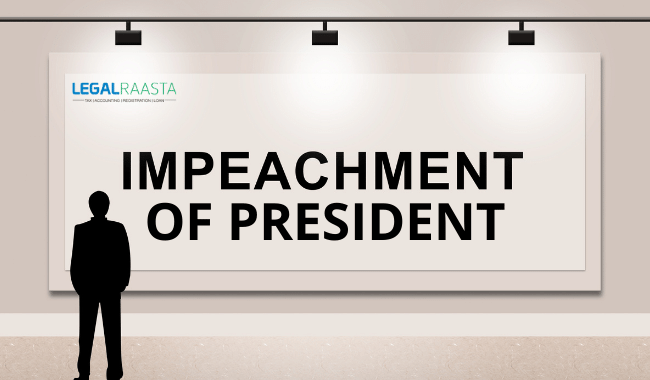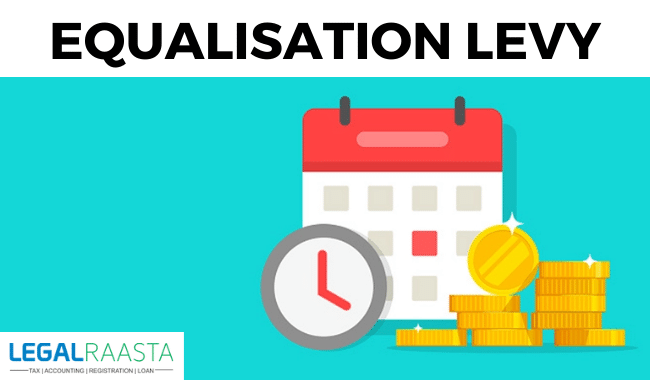Foreign Exchange Regulations
The foreign exchange regulations have been changed over the years to help the payment of funds both in and out of India.
There have been many changes in the regulations over the period of time in line with the economic liberalization of the Indian economy.
Still, in some cases, specific approvals are needed from the regulatory authorities for foreign exchange transactions/payments.
The Foreign Exchange Management Act officially came into existence on 1st June 2000. Thus the forex market in India is operated by RBI and the arrival of The Foreign Exchange Management paved the path for the introduction of the Prevention of Money Laundering Act (PMLA) of 2002.
The foreign exchange regulations in India are regulated by the Foreign Exchange Management Act, 1999 (“FEMA”). The highest foreign exchange regulatory authority in India is the Reserve Bank of India (“RBI”) which makes the law and is responsible for all major approvals.
FEMA is applicable to all parts of India and it is also applicable to all offices, offices and set-ups outside India which are owned or operated by an individual who is a citizen of India.
It is also applicable to all branches, offices and set-ups in India which are run or owned by a person who is a resident outside India. FEMA regulates all aspects of foreign exchange and has direct involvement in external trade and payments.
FEMA also impacts foreign nationals who are working inside or outside of India.
FERA – the four-letter acronym for Foreign Exchange Regulation Act is a codification that was introduced in 1973 with the purpose to rule the dealings in foreign exchange, enforce restrictions on specific payments and to keep an eye on the transactions impinging the foreign exchange and the import and export of currency.
Salient Features of FERA:
FERA is applicable to all the citizens of India, the intention of making FERA was to conserve the foreign exchange resources of the nation. Some of the key features of the act are as follows:
- It is authorized by RBI to any person/company to deal in foreign exchange
- It is authorized for the dealers by the Reserve Bank of India for making payments in foreign currencies, subject to review and revoking the authorisation in any case of non-compliance
- It also gives authorization to the money changers for conversion of currencies as per the rates determined by RBI
- Restricting import/export of currencies
- Restricting the people other than the authorised dealers from getting involved in transactions involving the financial currency
- Restrictions on issue of bearer securities
- Restrictions on containing or holding any immovable properties outside India
- It also restricts making/receiving payment to/from a resident outside India
- The RBI has the power to request information and seize records, wherever or whenever possible.
FERA VS FEMA: A comparison
FERA is the Act of the Parliament introduced in the year 1973, with the intention of managing and conserving India’s foreign reserves.
The Foreign Exchange Management Act (FEMA) is an extension to the already existing law. The intention behind the validation of FEMA was not only to regulate and help foreign exchange but also for helping the increment of foreign trade and payments along with increasing the size of foreign exchange reserves in India. Made public in the year 1999, FEMA, unlike the former law, liberalised the foreign exchange controls and restrictions on foreign investments to a very big extent.
Not only this, but FEMA also gave attention to the systematic development and proper management of the forex market in the country.
Not like FERA, the violation of FEMA is a complex offence, the charges of which can be removed.
Except this, there are different punishments for breaking the laws of FERA and FEMA.
Acquisition of property under FERA and FEMA
There is a major difference between FERA and FEMA concerning the purchase of property in India.
While according to FERA, “citizenship” was the criteria for obtaining property; under FEMA it is the “residence” which is the criteria.
This means that under the laws of FERA, a person who is an Indian citizen could obtain property in India and a foreign citizen could not obtain property in India (except as permitted to NRI’s).
However, according to FEMA, an Indian resident can obtain property in India which is otherwise not permitted to the non-residents. Precisely, FEMA has emerged as a replacement or improvement over the former FERA.
Moreover, a foreign company that has its branch office or another place of business in India, as per the rules of FERA/FEMA, can acquire immovable property in India that is incidental or secondary to carrying on such activity.
To conclude, anything and everything that was associated with Foreign Exchange was regulated under the Foreign Exchange Regulation Act.
And though the laws were made for the benefits of the citizens of India, it obstructed the growth of Indian Industries owing to its excessively stringent restrictions.
However, with the introduction of FEMA, the scenario changed soon, from control to management along with helping the development and management of the foreign exchange market in India.
Objectives of Foreign Exchange Regulations
The objective of regulation is to ensure fair and ethical business demeanor. In their turn all foreign exchange brokers, investment banks and signal sellers have to work in acceptance with the rules and standards made or laid down by the Forex regulators.
Generally, they must be registered and licensed in the country where they work.
Brokers having a license may be subject to repeated audits, reviews and assessments to check that they meet the industry standards.
Foreign exchange brokers may have capital requirements that enable them to contain a sufficient amount of funds to be able to conduct and complete their customers’ completed foreign exchange contracts and also to return intact funds to customers in the event of bankruptcy.
Exchange Rate Policy Of India
India’s exchange rate policy has evolved in line with the domestic exchange rate policy as well as international developments.
The period after independence was marked by a fixed exchange rate authority, which was in line with the Bretton Woods system prevalent back then.
The Indian Rupee was fixed to the Pound Sterling on account of historic links with Britain.
After the Bretton Woods System was abolished in the early seventies, most of the countries moved towards a system of flexible and managed exchange rates.
Decline in the share of Britain in India’s trade meant the increase of diversification of India’s international transactions along with the weaknesses of fixed to a single currency, the Indian Rupee was delinked from the Pound Sterling in September 1975.
The exchange rate later on came to be determined with mention of the daily exchange rate movements of a basket of currencies of India’s major trading partners which was not disclosed.
As the basket-linked management of the exchange rate of the Rupee did not capture how the market worked and the developments in the exchange rates of competing countries fully, the Rupee’s external value was allowed to be fixed by market forces was carried out in gradual manner following the balance of payment difficulties in the nineties.
An important two-step downward adjustment was made in 1991 to the exchange rate of the Rupee. In March 1992, the Liberalised Exchange Rate Management System (LERMS) involving the dual exchange rate was set in motion. A unified single market-determined exchange rate system based on the demand for and supply of foreign exchange was put in place of the LERMS effective on March 1, 1993.
The exchange rate policy of the Reserve Bank emphasizes maintaining orderly conditions in the foreign exchange market.
For that purpose, it closely keeps an eye on the developments in the financial markets at home and abroad. It also intervenes in the market by buying or selling foreign currencies when needed.
The market operations are carried out either directly or through public sector banks.
In addition to the traditional instruments like forward and swap contracts, the Reserve Bank has given facilities that increased availability of imitative instruments in the foreign exchange market.
Trading in Rupee-Foreign Currency Swaps, Foreign Currency-Rupee Options, Cross-Currency Options, Interest Rate Swaps and Currency Swaps, Foreign Rate Agreements and Currency Futures has been made possible.
What is transfer pricing?
A separate code on transfer pricing as mentioned under the Income tax Act (Section 91 to 92F) which covers the international transactions under the section “group and specific transactions”.
Thus transfer pricing has become an international tax problem for multinational companies which rely on international transactions.
As a business, you will need to consider these in an agency or a person if you want to hire them for transfer pricing or foreign exchange regulations.
Country wise Reporting
The documentation of Transfer pricing and country wise reporting gives a template to the multinational companies to report on a Yearly basis for each tax jurisdiction in which they do business. This report is known as a Country-by-Country Report (CBC Report)
The CBC Reporting standard gives the multinational companies a package of reporting which may consist model law enactment which can be used by countries which authorize the parent entity of the multinational company to file the CBC report which contains their global allotment of profit, taxes paid, and specific activities of economic indicators in its jurisdiction in which they work and three model skilled authority.
Practical Steps for Country to Country Reporting
Action 13 of OCED lays the guidance note on execution of Documentation of Transfer Pricing and country by country reporting
Timing : Requirement for CBC Reporting
- The Multinational entities need to file the CBC report annually in the fiscal year starting from 1 January.
- The key element of the legitimate requirement needs the ultimate parent entity of the multinational company group to file the CBC report on timely basis
- The MNE fiscal year is related to the combined reporting period for financial statement purposes and not to taxable years or to the financial reporting periods of.
Which MNE’s are required to file CBC Report ?
All MNE’s group need to file the CBC Report Except the following-
Some MNE’s group with annual combined income of the group in the immediate previous fiscal year is less than 750 million € or equivalent to the amount in domestic currency are generally exempted from this.
Necessary conditions for obtaining and using CBC Report
Countries participating in OECD/G20 BEPS project need to agree to the following conditions for obtaining and using the CBC Report:
- Confidentiality
Authorities should maintain and enforce legal protections against the given information.
Such precautions will help preserving the confidentiality of the CBC report which is equivalent to the protection that would imply that such information is sent to the country under the laws of Multilateral Convention on Mutual Administrative Assistance in Tax Matters, a TIEA or a tax treaty that meets the internationally agreed standard of information upon request as reviewed by the Global Forum on Transparency and Exchange of Information for Tax Purposes CBC Report Template as it helps the authority to judge the high level transfer pricing risk and also evaluate other BEPS related risk.
- Consistency
Authorities should use the modern template as mentioned in Annex III of Chapter V of the Transfer Pricing guidelines which enables the authorities not to ask for either additional information nor will it fail to obtain the information which is needed as per Annex III.
- Appropriate Use
Authorities should rightly use the information received from the MNE’s in the CBC report template which will help them to evaluate high level transfer pricing problems and also evaluate the BEPS related risks.
- End to End transfer Pricing
As transfer pricing acceptance is usually a matter of senior tax professionals, the work of carrying out the inter company transactions are spread across a broad chain of internal functions and distant offices.
The process of transfer pricing execution involves multiple hands on taxation, divisional controller, shared common services, information technology etc.
If unified oversight is absent, unsound conditions can develop at every transaction point such as vagueness of responsibility, manual or informal practices, accounting policies, data mismatch, not efficient way for pacification etc.
These conditions expose the MNE’s to major risks , increase in compliance requirement inefficiencies which may lead to frustration and breakdown of the execution chain.
We provide all kinds of legal services like “Income Tax Return, Trademark Registration, Company Registration, FSSAI License and many more. So, contact the expert team of “LegalRaasta”, for a completely smooth and hassle free process.









